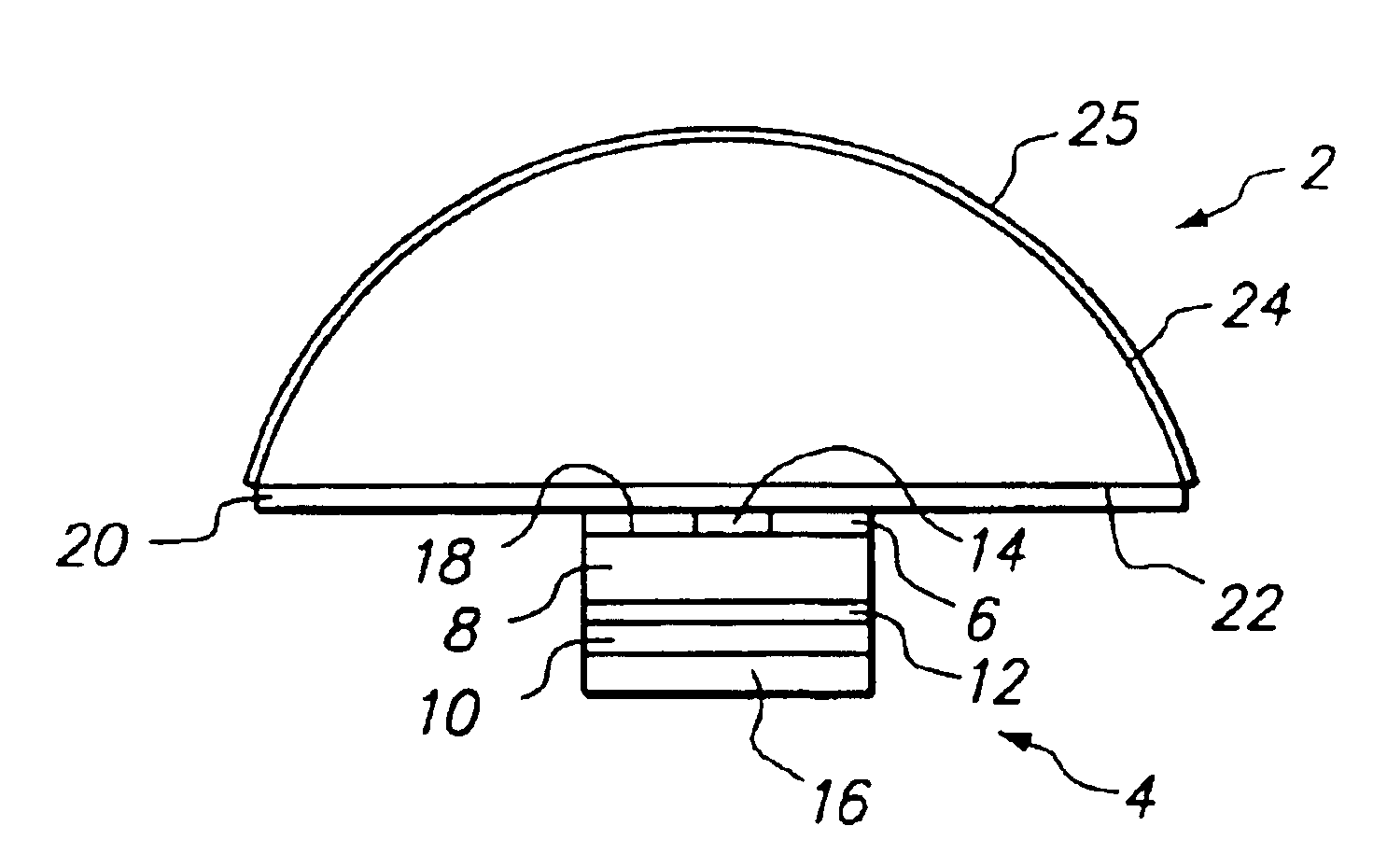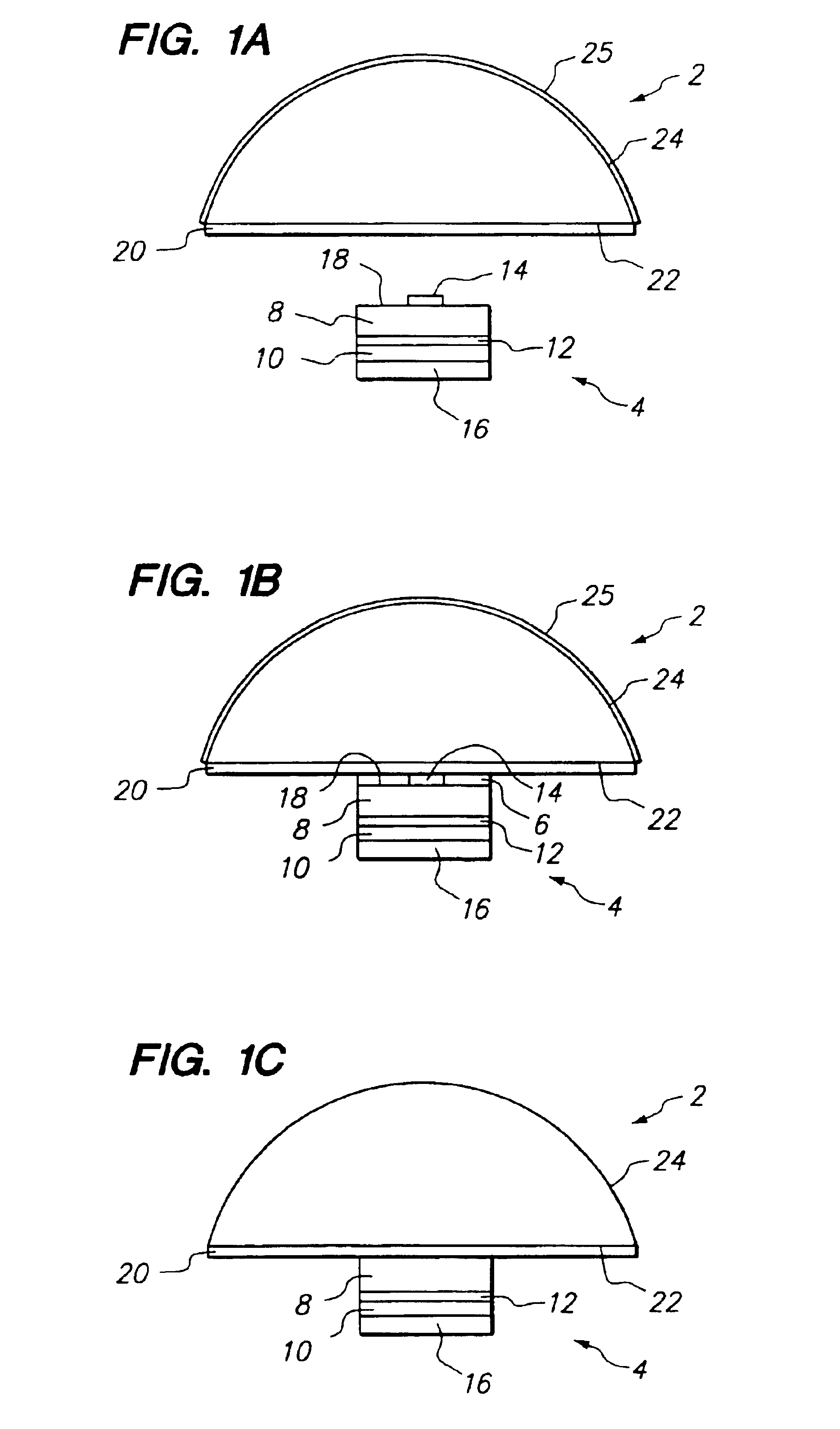Light emitting diodes with improved light extraction efficiency
a light-emitting diode and light-emitting technology, which is applied in the direction of lenses, instruments, and semiconductor/solid-state device details, can solve the problems of compromising the reliability and performance of leds, adding additional losses due to total internal reflection at the epoxy/air interface, and wasting materials and techniques. , to achieve the effect of improving the light-emitting device's light extraction efficiency, reducing loss, and high-efficiency
- Summary
- Abstract
- Description
- Claims
- Application Information
AI Technical Summary
Benefits of technology
Problems solved by technology
Method used
Image
Examples
Embodiment Construction
[0031]FIG. 1A depicts a transparent optical element 2 and a light emitting diode (LED) die 4 to be bonded to each other in accordance with an embodiment of the present invention. In FIG. 1B, in accordance with one embodiment of the present invention, transparent optical element, 2 is bonded to LED die 4 with a transparent bonding layer 6.
[0032]The term “transparent” is used herein to indicate that an optical element so described, such as a “transparent optical element,” a “transparent bonding layer,” a “transparent substrate,” or a “transparent superstrate” transmits light at the emission wavelengths of the LED with less than about 50%, preferably less than about 10%, single pass loss due to absorption or scattering. The emission wavelengths of the LED may lie in the infrared, visible, or ultraviolet regions of the electromagnetic spectrum. One of ordinary skill in the art will recognize that the conditions “less than 50% single pass loss” and “less than 10% single pass loss” may be...
PUM
 Login to View More
Login to View More Abstract
Description
Claims
Application Information
 Login to View More
Login to View More - R&D
- Intellectual Property
- Life Sciences
- Materials
- Tech Scout
- Unparalleled Data Quality
- Higher Quality Content
- 60% Fewer Hallucinations
Browse by: Latest US Patents, China's latest patents, Technical Efficacy Thesaurus, Application Domain, Technology Topic, Popular Technical Reports.
© 2025 PatSnap. All rights reserved.Legal|Privacy policy|Modern Slavery Act Transparency Statement|Sitemap|About US| Contact US: help@patsnap.com



